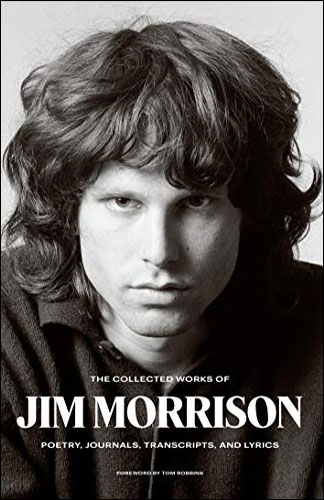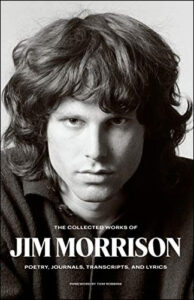
Created in collaboration with Jim Morrison’s estate, The Collected Works isn’t just another retrospective. This project is rooted in Morrison’s own vision. It was inspired by a document found after his death, titled Plan for Book, outlining how he intended his literary legacy to be shared with the world. Every page is a testament to Morrison’s creative ambition, spanning poetry, journal entries, film scripts, transcripts, and, of course, his iconic song lyrics.
What makes this anthology truly special is how it weaves together the many sides of Jim Morrison—the rock star, the philosopher, the dreamer, and the seeker. Readers get a rare glimpse into his deeply personal writings, many of which have never been published before. His handwritten notes, drawings, and musings paint a vivid portrait of a mind constantly probing the mysteries of existence, death, love, and freedom.
Fans of The Doors will recognize some of Morrison’s most famous lyrics within these pages, but they are presented alongside lesser-known poems and projects he pursued beyond music. From early, experimental verses to complex, visionary narratives, the book reveals a side of Morrison that even longtime admirers may not have fully known. It’s a reminder that Jim Morrison didn’t just perform poetry—he lived it.
In a particularly moving section, Morrison’s journals detail his frustrations and aspirations during the final years of his life. There’s a vulnerability here that stands in stark contrast to his often wild, Dionysian public image. He wrestled with fame, mortality, and the meaning of his own myth. These journal entries capture a man caught between the gravitational pull of celebrity and his desperate yearning for artistic purity.
The book also includes transcripts of Morrison’s work in film—a medium he loved almost as much as music. His exploration of visual storytelling, particularly through his experimental film HWY: An American Pastoral, reveals a broader artistic ambition that was tragically cut short. It’s fascinating to see how he envisioned blending poetry, imagery, and sound into a new form of expression.
The production quality of The Collected Works is itself a tribute to Morrison’s legacy. Beautifully bound, thoughtfully arranged, and richly annotated, the book feels like a sacred artifact. It’s clear that his estate and publishers treated the project with the reverence it deserved, ensuring that Morrison’s voice comes through loud and clear, without unnecessary editorial interference.
For longtime fans, this anthology is a deeply emotional experience—almost like receiving a long-lost letter from an old friend. For newer generations just discovering The Doors and Jim Morrison, it’s an invitation into the mind of an artist whose work remains as urgent and electrifying today as it was in the late 1960s.
Jim Morrison once wrote, “There are things known and things unknown, and in between are the doors.” With The Collected Works of Jim Morrison, readers are offered a key to those very doors—an intimate, unfiltered journey into the beautiful chaos of one of music’s greatest poets. This book is not just for fans; it’s for anyone who believes in the transformative power of words.
Whether you read it cover to cover or savor it a page at a time, The Collected Works of Jim Morrison stands as the definitive statement from a man who lived fast, dreamed hard, and left behind a legacy that still beckons us to break on through to the other side of life.



